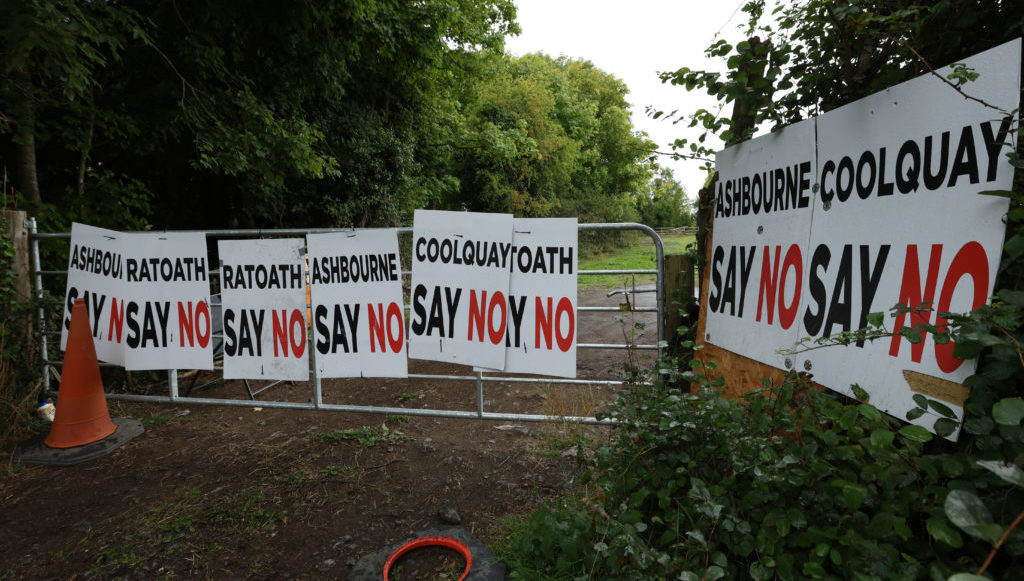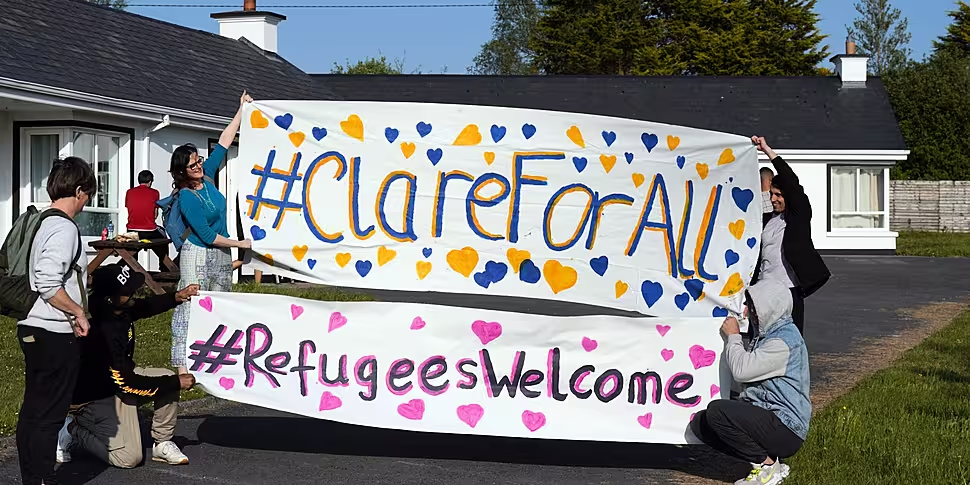Communities with asylum seeker accommodation centres in them feel more positive about immigration, a new report by the ESRI has found.
In recent years, concerns about immigration have pushed the issue to the top of the political agenda in a way never seen before in Irish politics.
Many communities have seen large protests outside hotels and homes designated for use by asylum seekers.
However, recently published research by the ESRI suggests that once asylum seekers arrive in a community, attitudes seem to soften towards them.
“We did find that people who are living in areas with an asylum seeker accommodation centre have a more positive attitude towards immigration,” the report’s author Keire Murphy told Newstalk Breakfast.
“Which is really supportive for this ‘contact theory’; this idea that when we’re actually around migrants and have contact with them, it leads to more positive attitudes.”
 An anti immigrant protest outside an asylum seeker accommodation in County Meath. Picture by: Alamy.com.
An anti immigrant protest outside an asylum seeker accommodation in County Meath. Picture by: Alamy.com.Ms Murphy continued that “not all contact is positive”, noting that communities need help to integrate the new arrivals.
“So, this is really important; the social infrastructure in an area really helps to actually create positive contact,” she said.
“It’s one of the reasons why disadvantaged communities might be more negative; there might be less social infrastructure there, less community groups.”
Overall, Ms Murphy said the report found there was a “nuanced” attitude towards immigration, with opinions varying significantly across the country.
“Rural areas are more negative, unless there’s a high share of migrants in those areas - then they’re actually as positive as urban areas,” she explained.
“Another is that residential segregation, when people are more clustered than spread out among the population, leads to more negative attitudes.”
 A protest outside a site being converted into accomodation for asylum seekers. Picture by: Colin Keegan, Collins Dublin.
A protest outside a site being converted into accomodation for asylum seekers. Picture by: Colin Keegan, Collins Dublin.Ms Murphy added that the popular view that migrants move disproportionately in working class communities is incorrect.
“When we look at the [communities with the] largest increase, it’s in the more affluent areas,” she said.
“That doesn’t go against the grain when you think about who migrants are in Ireland.
“So, when you look at the research on this, migrants are more likely to be highly educated, employed.
“Most people come here for education, for work and to join family.”
The 2021 census found that 20% of the Irish population was born abroad, an increase from 17% in 2016.
Main image: Local residents with asylum seekers hold up a banner supporting refugees near an asylum seeker accommodation. Picture by: Alamy.com.









